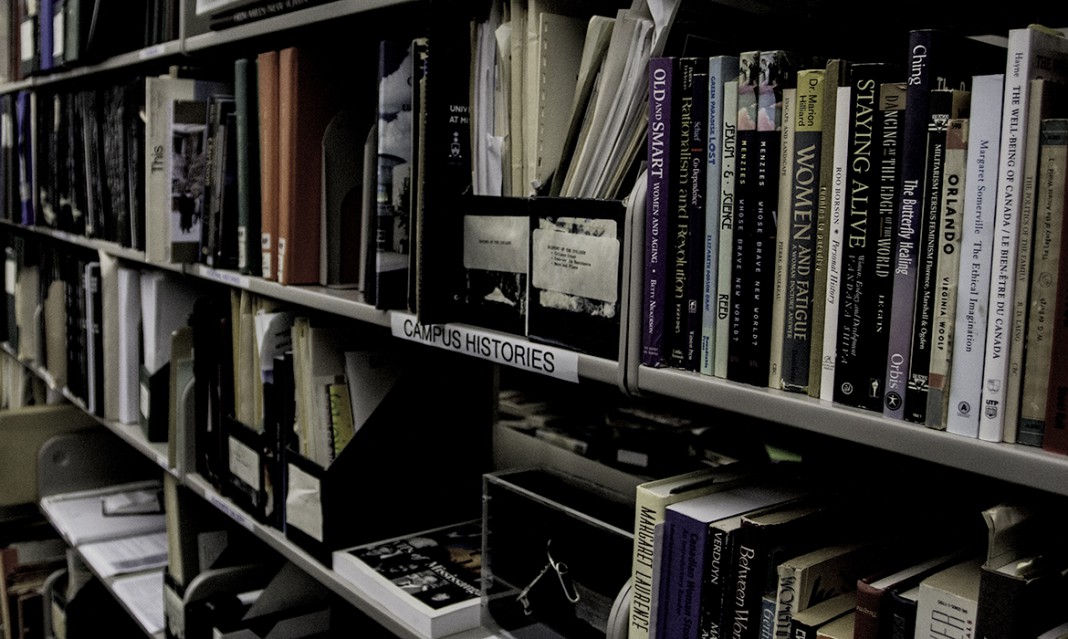In a rarely visited corner of the library on its highest floor, you’ll find a space dedicated to all materials related to UTM’s staff, student, and faculty activities. This room is known as the unofficial UTM archives.
Years ago, when the campus was still known as Erindale College, the library began to store the graduating class’s composite photographs, minutes of meetings, and general reports. Acting associate librarian Shelley Hawrychuk remarks just how unorthodox the origins of the archives are: “Over time people began to give things that discussed or represented Erindale College to the library based solely on an assumption they should. Now we also actively search for things to store.” But the archives aren’t currently taking donations from students—most items come from faculty and departments.
The official U of T archives are located at St. George, and the items there must usually be related to all three campuses. Those that are strictly related to only UTM are stored right here at UTM, and they include a black-and-white photograph of the 1970/71 UTM male lacrosse team and the pile of essentially every edition of The Medium ever published.
The vast variety of items stored in the archives ranges from an old ad for the university on VHS to the key used in the 1973 opening ceremony of the Erindale College. Some items in the archives were donated by past alumni, such as a recently donated collection of audio recordings of Ursula Franklin, a research physicist, feminist, and recent inductee into the Canadian Science and Engineering Hall of Fame.
The tapes are Hawrychuk’s favourite. “They are interesting to listen to because they seem more real than the written word,” she observes. “You can hear the history in the reader’s voice and get the nuances and subtleties of what they are saying when you actually hear their voices.”
There is an online index and complete inventory for the archives. Some items in the archives such as general reports, portraits of past U of T principals, and student surveys have been digitalized to ensure that a copy exists in case of damage to the original items.
While digitalizing data is arguably a safer way to store such valuable items, there’s a limit to what can be digitalized in the archives. “Every year we get the winning short story of the [Department of English and Drama’s] Sonny Ladoo Award, but we can’t digitalize it because we don’t have the rights to,” says Hawrychuk. “We try to digitalize as much as we can but sometimes we are held back by restrictions like that.”
The Medium’s back catalogue is currently being digitalized for the online archive by the library.
The archives are open to all students and faculty and are often consulted for research. “They may be doing a study in urban geography, for example, and wish to look at the early plans for the campus,” says Hawrychuk. Because of how valuable and unique most items are, students must first request a key at the front desk of the library. U of T graduates can also make use of the archives to find lost graduation pictures or just for the nostalgia of it—although you shouldn’t wait to graduate to see just how vast UTM’s history is.



